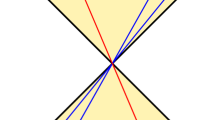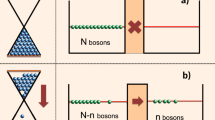Abstract
Two years ago a ‘radium clock’ was constructed for the Chicago Radium Institute similar to the original one described by Strutt (Phil. Mag., 1903). Three milligrams of radium sulphate, contained in a thin-walled glass tube, was used as the activating source. A platinum wire sealed into the tube made metallic connexion with the gold leaf support. The containing tube was of pyrex glass and was fitted with a ground joint at the top to allow the removal and adjustment of the parts. A carefully cleaned glass rod was sealed into the upper half of the ground joint which served as a support for the source and gold leaves and provided sufficient insulation for the operation of the clock. A chemical deposit of silver made the inner walls of the tube conducting, with the exception of a small opening left for observation. Due to this silver coating, the tube was not baked out but was exhausted with mercury diffusion pumps.
This is a preview of subscription content, access via your institution
Access options
Subscribe to this journal
Receive 51 print issues and online access
$199.00 per year
only $3.90 per issue
Buy this article
- Purchase on Springer Link
- Instant access to full article PDF
Prices may be subject to local taxes which are calculated during checkout
Similar content being viewed by others
Author information
Authors and Affiliations
Rights and permissions
About this article
Cite this article
THOMPSON, J. Rayleigh's ‘Radium Clock.’. Nature 122, 729–730 (1928). https://doi.org/10.1038/122729d0
Issue Date:
DOI: https://doi.org/10.1038/122729d0
Comments
By submitting a comment you agree to abide by our Terms and Community Guidelines. If you find something abusive or that does not comply with our terms or guidelines please flag it as inappropriate.



